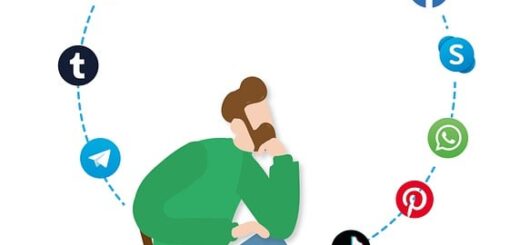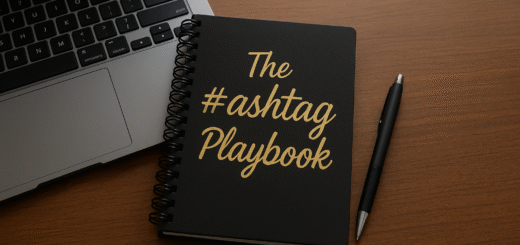Unlocking ChatGPT’s Potential for Content Creation and Marketing, Part I
 Unless you’ve been living under a rock, you’ve likely noticed that we are at a pivotal moment in the advancement of artificial intelligence.
Unless you’ve been living under a rock, you’ve likely noticed that we are at a pivotal moment in the advancement of artificial intelligence.
In this two-part series, we’re going to explore the capabilities and limitations of one such AI tool, ChatGPT. We’ll cover the common mistakes that users make when interacting with ChatGPT, as well as some shortcuts to achieve exceptional results. Additionally, we’ll discuss how you can leverage ChatGPT to enhance your online marketing efforts and drive better results.
What is ChatGPT?
ChatGPT (Chat Generative Pre-trained Transformer) is a large language model created by OpenAI, based on the GPT-3.5 architecture.
It is designed to generate human-like responses to natural language input from users, allowing for conversations that feel more like interactions with another person than with a computer program.
ChatGPT has been trained on a massive amount of data, including books, articles, and websites, and can generate responses on a wide range of topics.
In a nutshell, it’s a vastly knowledgeable software program that gives responses that seem almost human-like and creates content that mimics human generated content.
If you’ve never used ChatGPT before, you might visit it and ask it the following questions. I’ll warn you, these are silly questions and they do get silly but surprisingly good answers:
“Can February March?”
“Write biblical verse in the style of the King James bible explaining how to remove a peanut butter sandwich from a VCR.”
“Tell me a story about aliens in the style of Shakespeare.”
Does ChatGPT Have Limitations?
Oh yes.
Oddly enough, ChatGPT is well versed in its own shortcomings and happy to share them with us when I asked, “Hey ChatGPT, what are your limitations?”
Italicized text is from ChatGPT and my responses are in parenthesis.
As an AI language model, I am a tool designed to assist with various tasks, such as answering questions, generating text, and providing information on a wide range of topics. However, there are certain limitations to my abilities and potential risks to using me in certain contexts.
Firstly, as a machine learning model, my responses are based on patterns and data that I have been trained on, which means I may not always provide the most accurate or appropriate response to every question or situation.
(If you remember the term, “Garbage In, Garbage Out” then you’ll know the ChatGPT system is only as good as the input it’s using to form its answers. When ChatGPT uses misinformation found on the internet to form its reply, you’re going to get misinformation back.)
Additionally, my responses may reflect biases and inaccuracies present in the data that I have been trained on.
(Sadly but not surprising, if the content with which ChatGPT is programmed contains biases, then there will likely be biases in the content it creates.)
Secondly, while I am designed to communicate in a conversational manner, I lack the emotional intelligence and empathy of a human conversational partner. This means that I may not be able to fully understand and respond appropriately to the emotional needs or concerns of a user.
(Think of ChatGPT as a sociopath – it might be able to mimic emotion to a certain extent, but it will never understand emotion, let alone feel it.)
Finally, it is important to note that I am an AI language model and not a substitute for human expertise, especially in fields such as medicine, law, and finance, where specialized knowledge and expertise are required.
(Again, what comes out of ChatGPT is only as good as what goes into it. It’s best to be as skeptical of what ChatGPT says as you are of what your nutty cousin Earl posts on Facebook. Doctors who have tested ChatGPT by inputting patients’ symptoms have stated that while ChatGPT sometimes gets the diagnosis correct, there are other times that, if ChatGPT were the administering physician, the patient would have died.)
Overall, while I can be a useful tool in many contexts, it is important to be aware of my limitations and use me appropriately.
(I agree with this statement a billion gazillion percent.)
One more thing that’s important to note: ChatGPT has “limited knowledge of world and events after 2021. This means if you’re asking it to generate the latest news, techniques, discoveries, inventions, processes and so forth, it won’t be able to do it.
Common Mistakes Using ChatGPT
Before we get to the good stuff like super cool prompts to get dynamite answers, I thought we might cover some of the more common mistakes people make when using ChatGPT.
Not providing clear instructions. ChatGPT needs specific information to give you the answers you want. If you don’t provide clear instructions and specific context, it can lead to poor answers.
Let’s say that you have a blog about woodworking, and you tell ChatGPT to generate an article about woodworking. This article is going to be incredibly generic and quite possibly appealing to no one.
But if you ask it to, “Generate an informative article that describes the different types of wood joinery, with a target audience of beginning woodworkers, using at least three sources to support your writing and aiming for a length of 800 words,” you’re much more likely to get exactly what you want.
There are times when you are brainstorming what your article is going to be about, and in those times being non-specific can help you to find new ideas. Then when you hit upon exactly what you want, be sure to tell ChatGPT all it needs to know to generate the content you’re seeking.
Incorrect or unclear prompt format – Another problem you might encounter with ChatGPT is not wording your prompt in a way that ChatGPT knows what you’re asking for. Using incomplete sentences, using words from another language, being unclear or including irrelevant information can all result in a poor response.
Not digging deeper – When most people use ChatGPT, they make a query and accept the first result. But you can tell ChatGPT to generate more ideas, to dig deeper into a single concept and even to simply rewrite a section or the entire article in a different style. Instead of stopping with the first result, see how you can get ChatGPT to improve upon that first, second and even third result.
Not providing details – You can give ChatGPT ideas and custom elements in your prompt. For example, when asking ChatGPT to generate an email promoting a product launch, you might give ChatGPT the launch dates, the price or discount, the biggest benefits, the product name and a testimonial or two. ChatGPT will then incorporate these elements for you in the email it writes.
Not including requirements – This might be one of the most important things you need to do to ensure you get what you want. Let’s say you want to generate a recipe for pizza. If you don’t tell ChatGPT that you want a vegetarian, gluten free pizza that requires less than 10 ingredients, you’re going to get something else entirely.
Not providing feedback – If you provide feedback on the output each time you use ChatGPT, then the system will learn what you prefer, and you’ll get better results over time. Let’s say that you are generating article titles. You can tell ChatGPT for example that the titles sound like clickbait or they sound too formal. ChatGPT will then generate new titles that are more relevant to you, as well as doing this in the future, too.
Assuming it’s always right – While ChatGPT is fast and often accurate, it’s also possible to get answers that slightly off or even completely wrong. If you’re not sure you’ve received the correct answers to your query, go ahead and do the research to discover whether or not the information is correct.
Crafting ChatGPT Prompts
The bottom line of getting really great at ChatGPT is learning to write excellent prompts. Remember that the output of ChatGPT is only going to be as good as your input.
While anyone can go to ChatGPT and ask it, for example, to “Write a review for XYZ Product,” the results for each user are going to differ based on the prompts that the program has been given. Your prompts will determine how fast you get your result as well as how good of a result you get.
Prompts serve as a guide for the AI, indicating the desired response. When prompts are well-crafted, they can lead to insightful, accurate, and creative responses, ensuring that ChatGPT meets expectations.
Effective prompts have several benefits:
A well-structured and specific prompt ensures the AI understands your request, increasing the likelihood of receiving a relevant and helpful response as well as reducing the number of iterations required to obtain your desired result.
Skillfully crafted prompts can generate unique and creative content, leveraging ChatGPT’s vast knowledge base and processing power.
And when you provide necessary context and guidelines, you can minimize the chances of the AI generating irrelevant, factually incorrect, or unhelpful responses.
Let’s look at some of the best prompts tips I’ve used to date:
The Prompt “Act As” – you can ask ChatGPT to create content as if it is a real-life person, a fictional character or as someone who holds a particular job.
For example, let’s say you want to generate a list of possible titles for a book on American Baseball. Here’s the result I got:
- “The Art of Baseball: A Comprehensive Guide to America’s Favorite Pastime”
- “Diamond Chronicles: A Journey Through the History and Evolution of Baseball”
- “From Sandlots to Stadiums: The Rise of Baseball as America’s National Sport”
- “The Mind of a Champion: Strategies and Tactics of Successful Baseball Players”
- “Breaking Barriers: The Stories of Baseball’s Greatest Trailblazers and Innovators”
Next, I asked ChatGPT to generate 5 baseball titles acting as Walter White, the fictional drug king-pin character from Breaking Bad:
- “Breaking Balls: The Chemistry of Pitching”
- “Heisenberg’s Home Runs: The Physics of Hitting”
- “Meth-ods of Winning: The Strategy of Baseball”
- “Better Call Saul on the Field: Legal Strategies for Baseball Teams”
- “The Blue Sky of Baseball: Unlocking the Potential of Your Team”
See the difference? Finally, I asked ChatGPT to generate 5 baseball titles acting as a dog:
- “Bark at the Ballpark: A Canine’s Guide to America’s Favorite Pastime”
- “Doggy Dugout: Tales from the Barkside of Baseball”
- “Paws, Play, and Home Runs: A Retriever’s Reflections on the Game”
- “The Dog Days of Baseball: How Furry Fans Keep the Sport Alive”
- “Wagging Tails and Winning Games: A Bulldog’s Take on Championship Season”
You can tell ChatGPT to ‘act as’ just about anything. For example…
- The CEO of a big company
- A 15 year old farm boy
- A math teacher
- Brad Pitt
- A Martian
- Someone who believes the earth is flat
- The reader’s mom
- Monty Python
- A python snake
- A philosopher
- A stand-up comedian
- Your worn out shoes
I put that last one into GPT like this: ‘Act as worn out shoes talking about running’ and the result wasn’t half bad, considering how strange it is to be talked to by shoes.
Provide Context in your prompt – these are the relevant details that help ChatGPT to provide a useful and accurate response.
For example, who is the target audience for the content you are creating? What is the purpose of the content? What exactly does the content need to address, or what conclusions do you want the reader to draw? What type of content will this be? (Article, video, etc.) Is the audience in a certain location or do they have a certain problem or complication?
The more detail you can provide, the better results you will get.
For example, if your prompt is, “Generate a title for a marketing article” you might get…
“10 Proven Strategies to Boost Your Sales and Grow Your Business”
But if your prompt is, “Generate a title for a marketing article written for dentists setting up their first practice in Ohio” then you get…
“Ohio Dentists: A Step-by-Step Guide to Launching Your First Dental Practice and Attracting Patients”
As you can see the second result is much more specific and on target.
“Create a Summary” – You can copy content and paste it into ChatGPT after the words, “Create a summary:” to get a summary of your blogpost, your email or any of your other short content.
This makes it super easy to get a summary of your blogpost to post on social media, to place in an email or anywhere else.
“Create a Bullet List” – Just as above, you can copy content and paste it into ChatGPT after the words, “Create a Bullet List from this:”
This is an awesome way to see the content in bullet form and reuse that content elsewhere. For example, you can repurpose your blog post into a list of Tweets, captions on Instagram or posting on LinkedIn.
“Expand this Content” – You can take a sentence you’re written and paste it into ChatGPT with this command to have the AI expand what you’ve written into a longer piece. You can also specify how long you want it to be, such as 200 words or 5 paragraphs.
“Analyze this Tone of Voice” – You can copy content into ChatGPT with this prompt to analyze the tone of voice being used.
You can do this with your own content or with someone else’s. ChatGPT will analyze the tone of voice and write a paragraph about it.
You can then tell ChatGPT to use that same tone of voice to create new content. “Use the same tone of voice and generate 5 paragraphs about driving traffic with Instagram” and it will do it. How wild is that??
This is great for generating content that sounds like you wrote it, as well as generating content that might sound like someone you admire or want to emulate.
You can also ask for any tone of voice you like, such as a formal voice, casual voice, funny tone of voice, academic voice and so forth.
Look what happens when I ask ChatGPT to generate three email marketing titles in a formal voice:
- “Exclusive Invitation: Join Our Elite Club of Industry Leaders Today”
- “Unlock Your Full Potential: Discover Our Proven Strategies for Success”
- “Introducing Our Newest Product Line: Elevate Your Business to the Next Level”
But when I asked for a funny voice, this is what I got:
- “We’re not saying we’re the best, but our products will make you do a happy dance”
- “Don’t be a stranger! We miss you like a kid misses cake for breakfast”
- “Get ready to LOL: Our latest product will make you feel like a unicorn on a rainbow”
A unicorn on a rainbow? Amazing.
Here is a list of 25 tones of voice you can use in your content. Feel free to combine them or use separately, depending on what you would like ChatGPT to generate for you.
- Authoritative: commanding, confident, and decisive.
- Casual: informal, friendly, and conversational.
- Comical: humorous, amusing, and lighthearted.
- Confessional: open, honest, and personal.
- Conversational: easygoing, approachable, and relatable.
- Corporate: professional, polished, and formal.
- Dramatic: intense, emotional, and impactful.
- Educational: informative, instructive, and structured.
- Empathetic: understanding, compassionate, and caring.
- Enthusiastic: energetic, passionate, and upbeat.
- Formal: reserved, polite, and professional.
- Friendly: warm, welcoming, and cheerful.
- Humorous: funny, witty, and playful.
- Inspirational: motivational, uplifting, and encouraging.
- Inquisitive: curious, probing, and investigative.
- Ironical: sarcastic, witty, and mocking.
- Matter-of-fact: straightforward, objective, and practical.
- Melancholic: sad, reflective, and mournful.
- Nostalgic: sentimental, wistful, and longing.
- Playful: fun, whimsical, and mischievous.
- Poetic: lyrical, expressive, and artistic.
- Reassuring: comforting, supportive, and calming.
- Sincere: earnest, genuine, and heartfelt.
- Suspenseful: tense, exciting, and thrilling.
- Witty: clever, quick-witted, and humorous.
Criticize Mode – You can ask ChatGPT for ideas as well as what ChatGPT doesn’t like about the ideas it just provided.
For example, “Act as an advertising expert and give me 3 ideas for ads promoting Meow Meow Cat Food and then tell me what you don’t like about those ideas.”
Here’s the result:
- “Purrfectly Delicious”: Show happy cats eating Meow Meow Cat Food and emphasize the delicious taste and high-quality ingredients.
- “Healthy and Happy Cats”: Focus on the health benefits of Meow Meow Cat Food, such as healthy skin and coat, improved digestion, and overall well-being.
- “The Cat’s Meow”: Use humor to grab attention and showcase Meow Meow Cat Food as the top choice for cats.
As for what I don’t like about these ideas, here are some potential drawbacks:
- The “Purrfectly Delicious” idea may not be particularly unique or attention-grabbing.
- The “Healthy and Happy Cats” idea may be too focused on health and not enough on the emotional connection between cats and their owners.
- The “The Cat’s Meow” idea may rely too heavily on humor and not enough on the benefits of Meow Meow Cat Food.
Using the criticize mode you can get instant feedback on why something might not be a good idea.
I asked ChatGPT to suggest a title for a book on how to build a plumbing business using the internet to find customers.
“Plumbing Profits Online: A Step-by-Step Guide to Building a Successful Plumbing Business with Digital Marketing”.
Then I wrote, “now act as a marketing expert and tell me why you don’t like this title.”
As a marketing expert, I think the title “Plumbing Profits Online: A Step-by-Step Guide to Building a Successful Plumbing Business with Digital Marketing” is a good start. However, here are a few potential issues with the title that could be improved upon:
- It’s quite long: The title is somewhat long, which may make it difficult to remember or share with others.
- Lack of clarity: While the title mentions “digital marketing,” it doesn’t explicitly state that the book will be focused on using the internet to find customers. This could lead to confusion or disappointment for readers who are expecting a more general marketing guide.
- Uninspiring: The title doesn’t have a particularly catchy or exciting hook that would make potential readers feel compelled to pick up the book.
- Generic: The title doesn’t convey anything unique or distinctive about the book or the author’s approach to building a plumbing business with online marketing.
Some alternative title options that could address these issues include:
- “Online Plumbing Mastery: How to Build a Thriving Business in the Digital Age”
- “Plumbing Success 2.0: Mastering Digital Marketing for Your Plumbing Business”
- “From Pipes to Pixels: The Ultimate Guide to Using the Internet to Build Your Plumbing Business”
- “The Digital Plumber: A Step-by-Step Guide to Finding Customers Online and Growing Your Plumbing Business”
Overall, a great book title should be memorable, clear, inspiring, and distinctive, helping to communicate the book’s unique value proposition and grab readers’ attention.
Amazing, don’t you think?
You could spend an hour with ChatGPT and potentially come up with the title to end all titles, the instant best seller that people cannot resist buying.
Or not. Who knows? This is all still so new and we’re all learning.
We’ve covered more than enough to get you started on ChatGPT creating your own content. Be sure to read your results carefully, regenerate it and refine it as needed, and then smooth and polish it into your own gems before publishing.
Next month we’ll cover more advanced techniques for content generation using ChatGPT, two of which will blow your mind.
Stay tuned!

You Could Be Just One Simple Letter Away From The End Of All Your Financial Worries...
... And If You Enter Your Mailing Address Below I Can Show You Exactly How To Write It!
Privacy Policy: We value your privacy. You can unsubscribe from receiving future emails with 1 click at any time.














